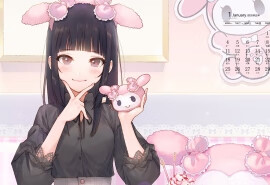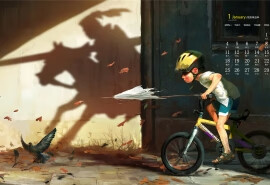
Asmiley face isn\'t always just a smiley face. Behind the yellow, wide-eyed emoji\'s grin lurks an intergenerational minefield.
The ubiquitous emoji means happy, good job or any number of other positive sentiments to most people over about age 30. But for many teens and 20-somethings,a smiley face popping up in a text or email is seen as patronizing or passive-aggressive.
Hafeezat Bishi, 21, started an internship at a Brooklyn digital media firm and was taken aback when co-workers greeted her with a bright smiley face. For Ms. Bishi, the welcome didn\'t seem warm but dismissive. She sees the image as conveying a kind of side-eye smile, not a genuine one.
The rise of emoji use at work, such as between remote teams during the pandemic, has created more misunderstanding than ever, said Erica Dhawan, the author of “Digital Body Language: How to Build Trust and Connection, No Matter the Distance.”
People over 30 generally use emojis to convey what the images always did, she said, while younger “digital natives” might ascribe sarcastic meanings to them,or use them as shorthand for an entirely different thought.
The skull and crossbones means death or hazard to many adults. Many younger people say that to them it signifies laughing extremely hard—as in “I\'m laughing so hard, I\'m dying.”
Rachel Eliza, 19, said she spends a lot of time explaining to her parents why their emoji selections, to her, are humorously off-base.
Take the upset emoji of a frowning face. It is defined by online dictionaries as“frustrated,” and she said that\'s how her father uses it. But it reads more sexual for Gen Z. It\'s almost like a pained sigh because somebody is so attractive, she said.
Charlie Nelson Keever, a 31-year-old attorney in the San Francisco Bay Area, spends a lot of time analyzing social media accounts to piece together Title IX legal cases. It was while researching narratives and timelines on a case that it dawned on her that young people don\'t use smiley faces to mean they are smiling.
She quizzed a Gen Z friend and was baffled by the undertones she learned that some emojis carry for that generation. On its face, the cowboy, a grinning emoji wearing a hat, can signify a special brand of quirky, giggly happiness. But for many in Gen Z, it means the sender is putting on a front, smiling on the outside while dying on the inside.
Ms. Keever feels she should have her finger on the pulse of how people communicate on the internet because she, too,grew up in the internet age.“There\'s nothing that makes you feel older than googling what an emoji means,” she said.
笑脸并不一定就是笑脸。在这个睁大眼睛的黄色表情符号的灿烂笑容背后潜藏着一个代际雷区。
这个随处可见的表情符号对大多数超过30岁的人来说意味着开心、干得不错或其他多种积极情绪。但在许多青少年和20岁左右的人看来,一个突然出现在短信或电邮里的笑脸表示自视甚高或消极对抗。
21岁的哈菲扎特·比希开始在布鲁克林一家数字媒体公司实习,当同事们用灿烂笑脸跟她打招呼时,她非常意外。在比希看来,这样的欢迎并不热情,而是不屑。她认为这个图像表达的是一种奸笑,不是真笑。
《数字肢体语言:不论距离远近,如何增进信任和交情》一书的作者埃丽卡·达万说,表情符号在工作中的使用增多,比如疫情期间在远程办公团队之间,这造成了比以往任何时候都要多的误解。
她说,30岁以上的人一般会用表情符号来传达这些图像一直以来所表示的意思,而更年轻的“数字原住民”可能会认为它们具有讽刺含义,或者把它们用作一种简略方式来表达截然不同的想法。
骷髅头在很多成年人看来指的是死亡或危险。许多更年轻的人则说,他们认为这个符号表示狂笑,就好比“我要笑死了”。
19岁的蕾切尔·伊丽莎说,她花了很多时间向父母解释为什么他们对表情符号的选择在她看来错得好笑。
以哭丧脸这个表示难过的表情符号为例。网络词典将其定义为“沮丧”,她说,她父亲就是这么用它的。但在Z世代(20世纪90年代中后期至21世纪10年代初出生的一代人——译者注)看来,它带有更多的性意味。她说,它很像是因为某人太有魅力而发出的一种苦恼叹息。
旧金山湾区31岁的律师查理·纳尔逊·基弗会花大量时间分析社交媒体账号,为的是厘清适用于《教育法修正案》第九条的法律案件。正是在研究一起案件的叙述和时间线时,她意识到了年轻人不会用笑脸来表示他们在微笑。
她询问了一个身为Z世代的朋友,她所了解到的一些表情符号在那代人眼中的隐含意思令她困惑。表面上,戴帽子、咧嘴笑的牛仔符号可以表示很特别的一种古怪傻笑。但对很多Z世代成员来说,它表示发送人在装样子,脸在笑,心已死。
基弗觉得自己应该始终掌握人们在互联网上的交流方式,因为她也是在互联网时代长大的。她说:“没什么比上网搜索表情符号的含义更让人感觉自己老了的。”(李莎译自8月9日美国《华尔街日报》网站)
版权声明:本文内容由互联网用户自发贡献,该文观点仅代表作者本人。本站仅提供信息存储空间服务,不拥有所有权,不承担相关法律责任。如发现本站有涉嫌抄袭侵权/违法违规的内容, 请通知我们,一经查实,本站将立刻删除。





